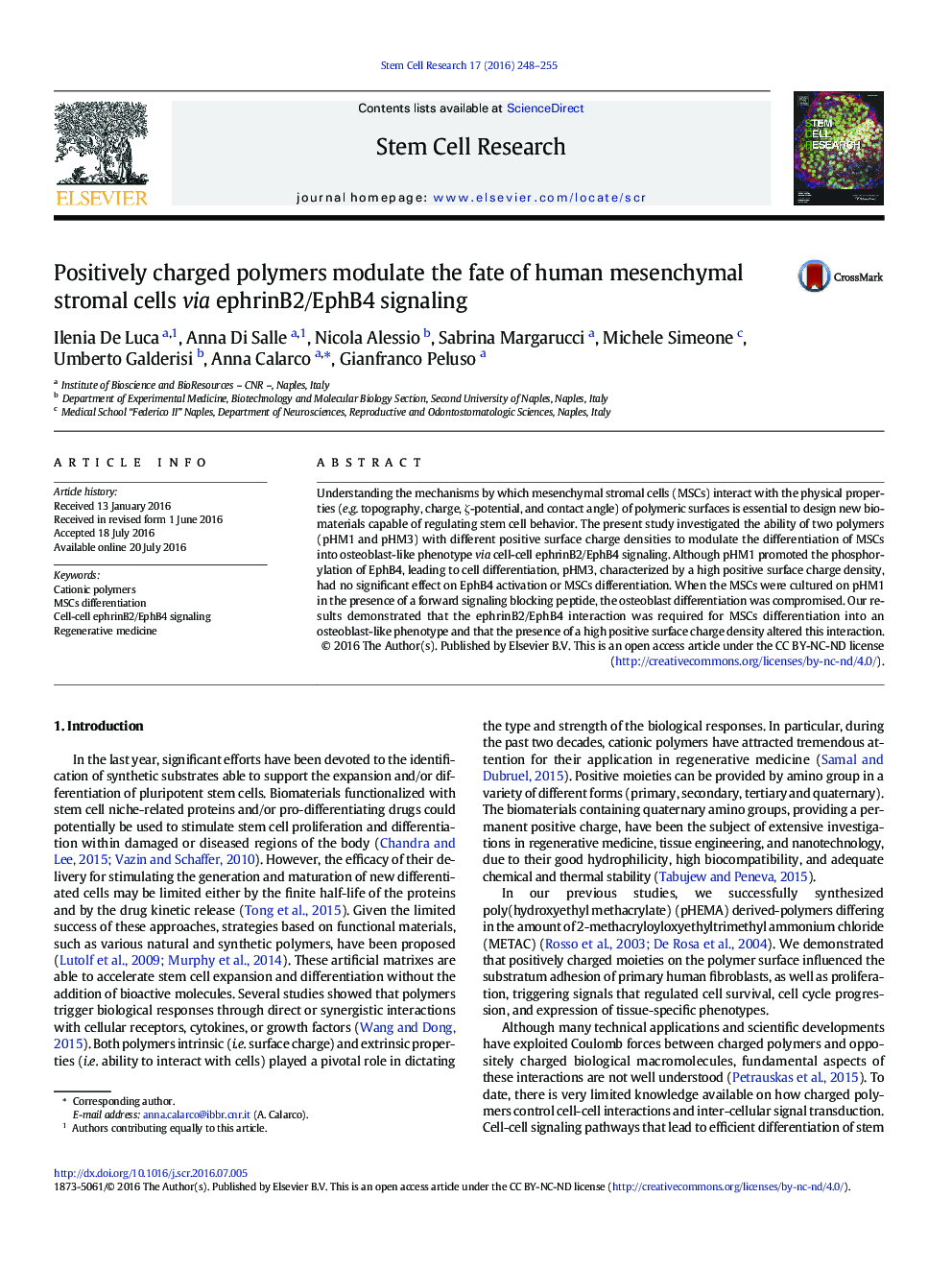| Article ID | Journal | Published Year | Pages | File Type |
|---|---|---|---|---|
| 2093875 | Stem Cell Research | 2016 | 8 Pages |
•Biomaterials controlling the fate of MSCs represent a novel strategy in regenerative medicine.•Cationic polymers can modulate the differentiation of MSCs via ephrinB2/EphB4 signaling.•pHM3 compromises the osteocyte differentiation altering ephrinB2/EphB4 interaction.
Understanding the mechanisms by which mesenchymal stromal cells (MSCs) interact with the physical properties (e.g. topography, charge, ζ-potential, and contact angle) of polymeric surfaces is essential to design new biomaterials capable of regulating stem cell behavior. The present study investigated the ability of two polymers (pHM1 and pHM3) with different positive surface charge densities to modulate the differentiation of MSCs into osteoblast-like phenotype via cell-cell ephrinB2/EphB4 signaling. Although pHM1 promoted the phosphorylation of EphB4, leading to cell differentiation, pHM3, characterized by a high positive surface charge density, had no significant effect on EphB4 activation or MSCs differentiation. When the MSCs were cultured on pHM1 in the presence of a forward signaling blocking peptide, the osteoblast differentiation was compromised. Our results demonstrated that the ephrinB2/EphB4 interaction was required for MSCs differentiation into an osteoblast-like phenotype and that the presence of a high positive surface charge density altered this interaction.
Graphical abstractFigure optionsDownload full-size imageDownload high-quality image (95 K)Download as PowerPoint slide
